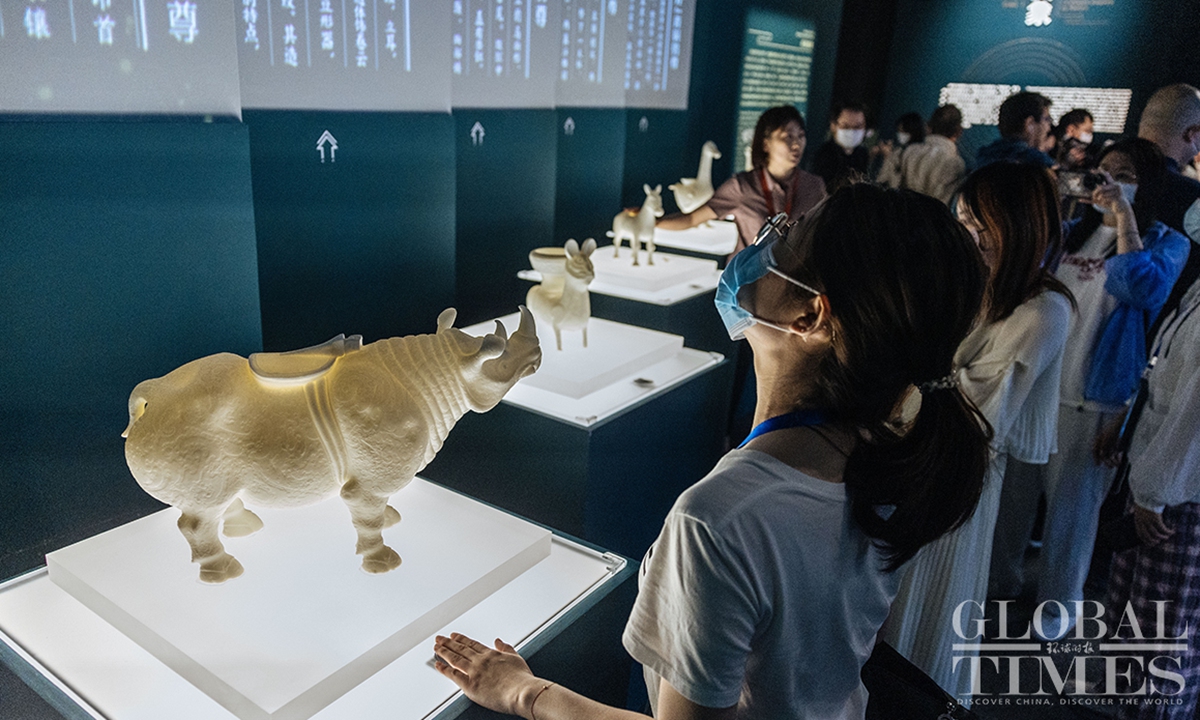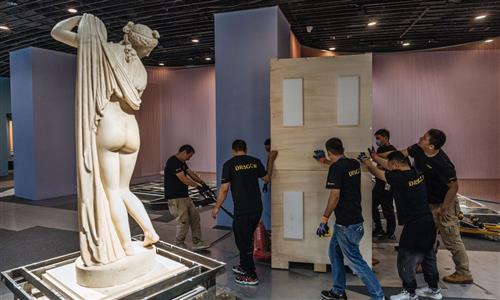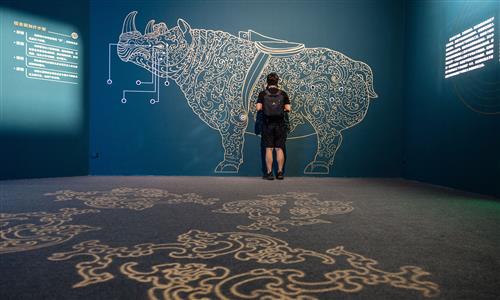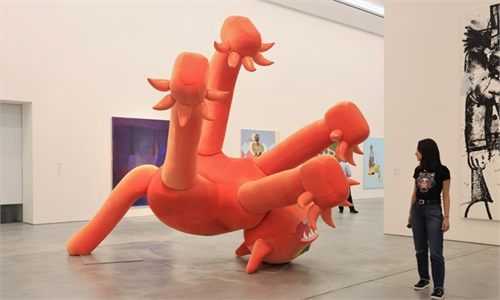ARTS / CULTURE & LEISURE
2,000-year-old wine vessel ‘comes alive’ in digital exhibition

Photo: Li Hao/Global Times
In order to strengthen the protection and utilization of cultural relics and make them "come alive," The Digital World of Rhino-Shaped Zun exhibition kicked off at the National Museum of China (NMC) on May 30.The exhibition makes use of advanced technology such as interactive displays to showcase one of the representative items in the NMC collection, a rhinoceros-shaped bronze zun, a type of wine vessel.
The rhinoceros-shaped zun dates back to the Western Han Dynasty (206BC-AD25). One of the star items at the NMC, the bronze vessel was chosen because of its high historical and cultural value as well as its attractive aesthetics and the insight it provides into the bronze casting techniques of ancient China.
Across five sections, the exhibition uses digital technology to introduce how this vessel was excavated, its functions in ancient rituals, the casting techniques used to make it and the meaning behind its design.
"This is a new attempt to rely on digital technology. It clearly shows the results of researchers' efforts. Visitors can participate in the exhibition through interactive experiences," Zhu Xiaoyun, curator of the exhibition, told the Global Times on Monday.
Digital technology is the main highlight of the exhibition. Visitors can learn about the vessel through sight, sound, touch and interactive concepts.
For instance, an augmented reality experience allows visitors to participate in the "restoration of the vessel, during which they can see the 17 artifacts located in the belly of the rhino by clicking on certain equipment. Another highlight of the exhibition is the use of pinhole imaging, which allows visitors to experience the feeling of being a researcher by examining the gold and silver ornaments on the surface of the vessel using a high-definition microscope.
"Digital technology makes it easier for people to gain knowledge. Previously, digital guides just used sound to explain knowledge to visitors, but in this exhibition, you can see the apparatus animated and what you want to know will be displayed on the digital guides," a member of the data center for the exhibition told the Global Times.
"The use of technology should fit the exhibition. We should not try to show off technology or revitalize cultural relics just for technology's sake. Technology should be used to revitalize cultural relics so that they can really enter people's hearts and minds. This is the real meaning of 'alive,'" Zhu noted.



